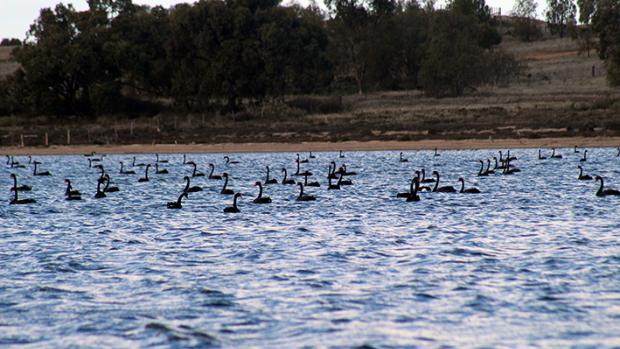Loading
A hardy plan for an endangered fish

The project to save one of Australia’s most endangered fish is continuing in the north of the catchment.
Round Lake and Lake Elizabeth, both near Kerang, are being carefully managed to create suitable habitat and conditions for the endangered Murray hardyhead.
There are only a few populations of this small fish left across the Murray Darling Basin.
The North Central Catchment Management Authority (CMA), Department of Environment, Land, Water and Planning, Goulburn Murray Water, the Victorian Environmental Water Holder and the Arthur Rylah Institute are working together with an aim of saving the fish from extinction.
With high salinity levels, Round Lake and Lake Elizabeth provide almost perfect conditions for the preferred habitat of Murray Hardyhead, with one small tweak needed.
“While Murray hardyhead are a freshwater fish, they are wetland specialists, which means they can live and breed in areas of high salinity, and adapt to the natural fluctuations of inland wetlands,” North Central CMA Acting Project Manager Amy Russell said.
“We manage them in saline lakes because their main predators – Europan carp and eastern mosquito fish – don’t like saline water.
“Our role is to deliver fresh water flows into the lakes at the best possible time, to freshen up the water just enough for specific aquatic plants to flourish, plants Murray hardyhead eat.
“Water has been flowing into Round Lake for a few weeks now, and will flow into Lake Elizabeth in the coming weeks.
“DELWP’s Wetland Monitoring and Assessment Program (WetMAP) team is examining the ecological responses to the water, with a strong focus on monitoring zooplankton numbers. Zooplankton is the Murray hardyhead’s main food source.”
The healthy wetland flows have also produced a huge boom in bird numbers.
“As we expected after last year’s floods, bird numbers are very healthy,” Ms Russell said.
“Wetlands such as Lake Elizabeth and Round Lake are part of the significant Kerang Lakes patchwork. We provide different kinds of conditions at different lakes, to ensure a high diversity of birds across the region.
“Before European settlement and climate change, the region’s lakes were diverse, which is why opportunities like this one are really important.
“Bird numbers have decreased by 70 per cent across the Murray Darling Basin in the past 30 years, so water for the environment has never been more important.
“The Murray hardyhead were also once widespread across the Basin. Now they are only found in three locations in the Swan Hill and Kerang areas, and less than 10 populations in the Basin
“We are all doing our best to prevent its extinction by improving habitats for them. The longer-term aim is to rehabilitate our waterways so Murray hardyhead can thrive everywhere
The flows are part of the Victorian Government’s $222 million investment over the next four years to improve the health of waterways and catchments.
They are prioritised by the Victorian Environmental Water Holder (VEWH) in line with its Seasonal Watering Plan 2017-18. The VEWH Seasonal Watering Plan 2017-18 is available for download from www.vewh.vic.gov.au, with regular watering updates posted on the North Central CMA website www.nccma.vic.gov.au.
